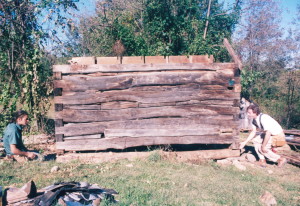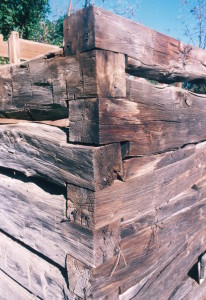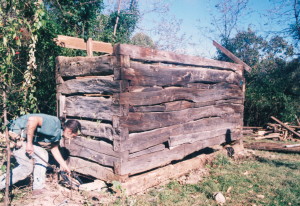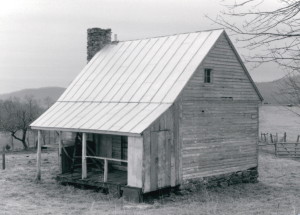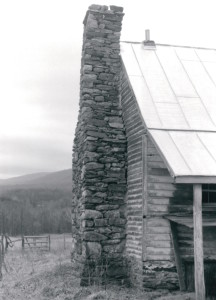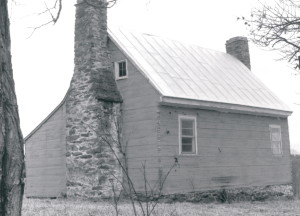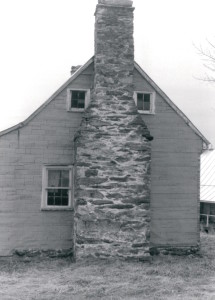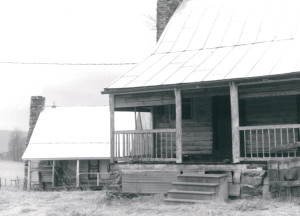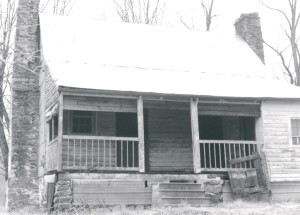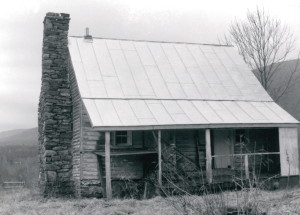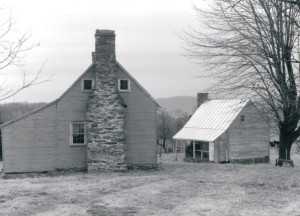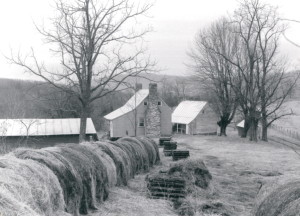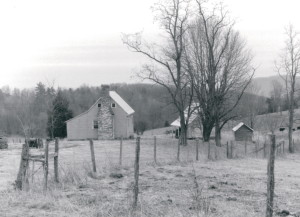The Tiny cabin… part 3
I have never seen more finely crafted chinking than what I saw on this little cabin.
Look at how nicely fitted each piece is that fills in the gaps between the logs.
I did not see any indication that any further methods were employed to keep out weather, which would tell me that this wood chinking was installed to keep out four legged creatures, not drafty air.
Originally posted 2015-04-27 15:41:25.
The Tiny cabin… part 2
The notching was well done on this small cabin… nothing fancy here, no dovetails, nor v notches… just a basic square notch… but it worked, it held up well, it did it’s job, for more than a century.
Do you have a desire to build a log cabin for yourself one day?
Consider building one of these for yourself.
Start small.
A person by themselves could knock one of these out this summer… and it would still be around for others to enjoy well into the 2100’s.
Originally posted 2015-04-27 15:17:44.
A dry laid chimney
Such an attractive chimney.
Likely built by someone who was not a professional mason, using ruble stones that were picked up out of nearby fields, laid without the benefit of cement, and yet, it has stood for centuries.
Cement, one of the great wonders of the world, has been a curse with regard to the creation of attractive stonework. All masons should lay stone as if their cement was not there.
Originally posted 2015-04-25 21:38:15.
The Two Sisters… part 2
Here are the porches of “the Two Sisters”.
One of the first rules that I’ve always heard about Virginia buildings is that whenever there is a grouping that they always lined up with each other perfectly… they were either built perpendicular or parallel to each other.
These two ladies clearly broke that rule.
I also notice that the house with two chimneys has three front doors… now that’s curious.
And, the other house, has has two doors on the porch… with another that leads down to the root cellar. There is no shortage of doors here, for sure.
At first, I wondered if these houses might have been homes for farm hands or servants. I was assured by the property owner that that wasn’t the case… For one thing there was no “main house” anywhere nearby. And that these houses were both known to have been inhabited by a large family with many extended family members… each seeking a bit of privacy.
Notice the stone chimneys… each with it’s stones laid flat. How about that nice cap detail at the top? sweet!
Within a half mile of my residence there have been at least twenty houses built in the last ten years, all in excess of a million dollars, and not one of them has a masonry chimney. If these down home folks could have these solid stone chimneys back then, why is there no room in the budget of the wealthy for at least one today?
Originally posted 2015-04-25 13:39:03.
The Two Sisters
I’d like to introduce you to “the two sisters”.
Aren’t they beautiful?
Here we have two small Virginia homes frozen in time. Each is a log cabin… built in the early 1800’s. This is what home looked like for most Southerner’s during that time.
I’d like to spend a couple days with you looking at the details we find in the photos I took of these two places. There are some treasures and mysteries to be found, and lessons to be learned about home/cabin design and construction.
I was called by the man who owned these homes and asked by him if he should sell these for salvage. I spent the day riding out to take a look at them, and in exploring them, and in getting to know the man who owned them.
The owner did not financially need to sell the structures. He was taking excellent care of them. And, he was fond of looking at them setting proudly at the back of his property.
I encouraged the owner that the best thing he could do for these gems was to keep on doing just what he was doing… taking care of them. I gave him my business card and told him that if the time ever came that they had to go that I was the man for the job, but that I hoped that he would never call. I was thankful that he hadn’t called one of the guys who specializes in making furniture out of old houses… that would have been a crime.
As far as I know these ladies are still sitting in this same pasture.
Originally posted 2015-04-25 12:50:26.


